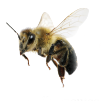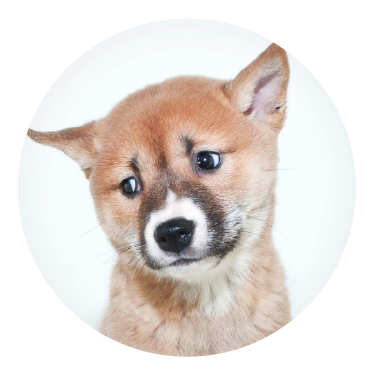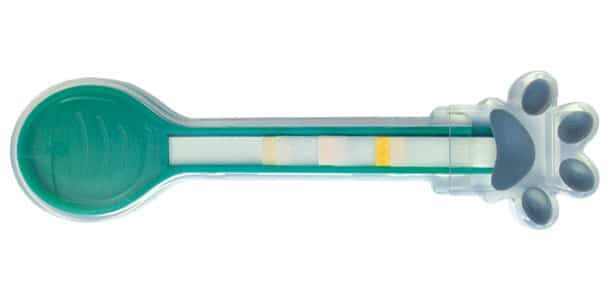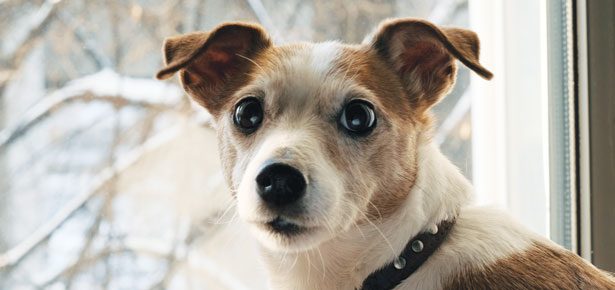

HELP! What To Do In Common Canine Emergencies
Don't panic! Tips to get you and your dog through

Chances are you’ve seen comical Tumblr photos of puffy-snouted dogs after a run-in with a bee. But a sting is no laughing matter for man’s best friend: it can be anything from uncomfortable to potentially life-threatening. Stings around the mouth and face are the most serious and, unfortunately, the most common. The effects hit short-nosed breeds, like Bulldogs or Pugs, the hardest because their upper airways are already quite restricted.
If your pup is stung, first remove the stinger from the skin and use a cold compress to decrease swelling. Dr. Fraser Davidson, a veterinarian with a practice in Vancouver, Canada, says it’s safe for pet parents to give dogs an anti-histamine like Benadryl at a dose of 25 mg for a small dog and 50 mg for larger breeds. Call your vet if you’re unsure about the dose for your dog and avoid administering a “non-drowsy” formula.
Seek vet care immediately if your dog is brachycephalic (short-nosed) or has had a bad reaction to a sting in the past, he adds. Otherwise, monitor your pup closely and call in a professional if he experiences facial swelling, difficulty breathing, hives, vomiting, diarrhea or if he collapses.

Scavengers at heart, it only takes a split second for a dog to snatch and devour chicken bones left on a dinner plate or in an uncovered garbage bin. The concern is that cooked bones can splinter when chewed, which can lead to the sharp splinters getting stuck in the esophagus or intestines, possibly perforating stomach walls and leading to a number of complications including (costly) surgery.
But not every ingested bone requires a rush to the vet, says Dr. Fraser Davidson. If the bones were relatively small and swallowed whole it’s possible that they’ll break down in the stomach and pass normally. But you need to keep a close eye on your dog for the next 48 hours. Davidson advises feeding the culprit a high-fiber diet including whole wheat bread and canned pumpkin to cushion the stomach and bulk up the dog’s poop. Handle your pooch gently so no extra pressure is put on the abdomen and watch out for vomiting, bloody stool, lethargy, and discomfort. See your vet if any of those signs arise, or if the bones haven’t passed. Surgery may be an option if the bones consumed were large or sharp. Don’t attempt to make your dog vomit up the bones because the risk is high for them to become lodged in the esophagus, Davidson added.
It’s worth noting that the ingestion of all cooked animal bones are concerning, but ones from chicken are particularly bad because they splinter easily, making them sharper and pointier. Larger bones, like beef ribs, carry slightly less risk of splintering, but they’re more likely to fracture teeth if bitten into. Davidson says lamb chop bones also often get stuck if swallowed because of their shape.

Similar to the chocoholic of the human variety, one bite of chocolate is almost always never enough for a dog. Unfortunately, even a small portion can poison a dog because of what’s inside it: theobromine. The chemical, similar to caffeine, can’t be metabolized by dogs so it puts them at risk of poisoning.
If your pup has eaten chocolate, don’t waste time going to “Dr. Google” for help, says Dr. Ahna Brutlag, veterinary toxicologist and associate director of veterinary services at Pet Poison Helpline. Brutlag says a veterinary professional or service like Pet Poison Helpline, a 24/7 poison control helpline for pets, can help you quickly determine if your dog ingested a toxic dose based on the animal’s breed, age, weight, type of chocolate, and any medical issues your dog may have.
The type and colour of chocolate eaten is very important: the darker and bitterer, the more dangerous it is, says Brutlag. Baking chocolate and gourmet dark chocolate contain significantly more theobromine than milk chocolate. White chocolate hardly has any. That means a healthy 50-pound dog could be poisoned by one ounce of baker’s chocolate, but it would have to gobble nine ounces of milk chocolate to experience the same serious problems.
If your dog recently ate chocolate and isn’t having any negative physical reactions, a pet professional may advise you to induce vomiting using hydrogen peroxide—seek professional advice for when and how to do this. A dog should be taken to the vet immediately if he displays signs of poisoning: vomiting, diarrhea, increased thirst, racing heart rate, and excessive urination. Young puppies and dogs with heart disease are most at risk.
What to do if your dog is bitten by another dog
With unique and sometimes unpredictable personalities, bites between canines do happen. Whether it’s the result of personality clashes between pups on neighbourhood walks, pet owners don’t need to rush to the vet if the injury doesn’t require stitches, says Jillian Myers, owner of Healthy Paws, a Los Angeles-based pet first aid training firm.
If the skin is broken, the first thing to do is wash the wound gently, as dog’s mouths are full of bacteria. Myers says you can pack the area with some sterile cotton pads before you wrap in a sterile gauze roll. But not too tightly: overly tight wrapping can act like a tourniquet and actually cut off blood supply to an animal’s limb.
The next step is making sure your dog doesn’t “mess with it,” says Myers. If the wound is where the dog can reach it by its mouth, consider putting on an “E” or inflatable recovery collar for a few days so your pooch doesn’t lick and worry the area. Change the gauze daily and be vigilant about watching for any negative physical changes. Pus, warmth, swelling, and increased pain could signal an infection, which warrants a visit to the vet.
What to do if your dog gets into a fight
Most scuffles between the canine offenders are all noise and no injury but there are definitely times when you need to intervene. The trick is to know the difference. The key here is duration: if a fight is going to resolve on its own, it will likely be over by the time you have a chance to respond, says New York City canine behaviour specialist Renee Payne. She recommends reading the behaviour cues of the pooches and intervening as soon as the dogs are in trouble.
While some dog trainers advise owners to use the old “grab the hind legs” approach, Payne says that approach is outdated—and risky for both the human and the dog being pulled away. “The dog could pull away and redirect,” she said.
Instead of getting yourself physically involved, the smarter tactic is to get loud, says Payne. “I usually yell and clap as loudly as possible,” she said. Failing that, your next step is to throw something between the dogs. Obviously you don’t want to hurt the animals, but anything you have handy—your purse, a water bottle—anything to interrupt the fight and get the dogs’ attention, is fair game. Payne says the common advice of dousing the dogs with a bucket of water or spray from a garden hose would work, but would only work if there’s water nearby. When dealing with canines that have a history of aggression, she carries a citronella spray that it specifically formulated to deter dogs. It’s easy to carry or clip to the end of a leash, but should only be used if other methods have failed, Payne says.

The CEO of Aussie Pet Mobile Canada, Richard Avis, describes the effect of skunk spray as “horrendous,” adding that pet owners attempting to de-skunk their animals themselves will “stink out the house, the tub, and everything in the close vicinity.” The smell is so bad that his mobile grooming firm won’t clean a skunked dog in the morning because it takes “a solid hour” to sanitize and clean the grooming van afterwards.
If there’s an upside to a dog being skunked, it’s that the problem doesn’t normally require a vet visit unless they’ve been squirted directly in the eyes or mouth, which can cause irritation. But the problem does require quick action. Skunk spray contains several oily chemical compounds called thiols, which means hosing off Fido with water alone won’t clean it away, and the oil will saturate your dog’s skin—and start smelling worse—if it’s not removed immediately.
Despite the old wives tale, tomato juice just won’t cut through that powerful stink, but you can easily whip together an effective cleaning solution with common household items. The American Humane Society recommends bathing your dog with a mix of one quart of 3% hydrogen peroxide, quarter cup baking soda, and one teaspoon of liquid dishwashing soap. You may have to double the recipe for long-haired or large dogs. Use gloves and protect your dog’s eyes. You can also use vinegar diluted with water if you don’t have those ingredients. The Salty Paw grooming company in New York City says mixing mouthwash with Dawn dishwashing liquid will also work in a pinch. Follow up with a good soaping of your dog’s regular shampoo and your pooch should smell sweet again.
What to do if your dog is choking
While choking is one of the most common reasons for canine ER visits, most dogs have a good chance of dislodging a stuck item themselves as long as they’re conscious and can still cough or gag, says pet first aid expert Jillian Myers. Confine them to a small area like a bathroom or utility room and stay with them for observation, she says, but head to the vet if the object doesn’t come up within a few minutes.
If your dog is conscious but can’t cough, gag or has a wheezing sound, Myers advises to perform chest thrusts “by placing your hands on each side of your pet’s chest and compressing inward.” The amount of pressure depends on the size of the dog, but needs to be forceful enough to “try to pop the object up,” she adds. Keep repeating the thrusts until the object comes up, and follow up with a vet exam to see if there has been any further damage. Bring the object with you. If the object doesn’t come out within a few minutes (or if your dog goes unconscious!), get to the vet ASAP. She advises owners never to perform abdominal thrusts—aka the Heimlich maneuver—on animals because the technique can have severe, even fatal, complications in animals.
In the worst-case scenario—your dog goes unconscious—visually check your dog’s airway by opening their mouth and pulling out the tongue to get a clear look down the throat. If you can see the object, use your fingers or needle-nosed pliers to remove it, being careful not to push it further down the throat, Myers warns. From here you may have to do CPR on your dog, but that’s something Myers recommends is best learned in a pet first aid class.
What to do if your dog has bad diarrhea
Many dogs are walking stomachs, so it’s no surprise that canines are more than occasionally struck by a bout of diarrhea due to some manner of dietary indiscretion. A case of “the runs” can occur if your pup has eaten, drank or licked something abnormal and disrupted the flora in their intestines or bowels.
Veterinarian Dr. Fraser Davidson recommends heading to the vet if your pup is very young or old because those patients have less tolerance for dehydration. Ditto if the diarrhea is excessive (every hour, in the house), there’s blood in the stool, if there’s also vomiting, if the dog is restless or lethargic, and if the diarrhea has lasted more than 48 straight hours. It’s best to monitor the situation at home if your dog is still “bright, happy, and playful,” he adds, and if the dog is young to middle-aged. He advises removing food for 24 hours and offering water only, unless the dog is a young puppy. Once the diarrhea settles down then introduce bland foods like white rice and boiled chicken breast in small amounts to start. The added moisture in those foods will also help to rehydrate your dog. You can also consider hard-boiled egg whites or low-fat cottage cheese for protein. If feces firm up in a day you can wean your dog back onto normal food over the next few days.
Join the newsletter and never miss out on dog content again!
"*" indicates required fields
By clicking the arrow, you agree to our web Terms of Use and Privacy & Cookie Policy. Easy unsubscribe links are provided in every email.






